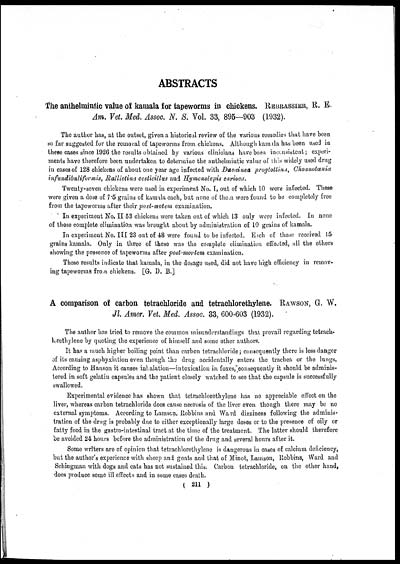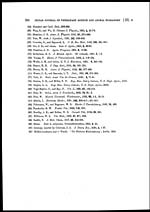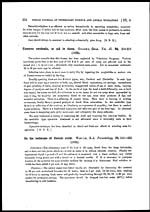Medicine - Veterinary > Veterinary colleges and laboratories > Indian journal of veterinary science and animal husbandry > Volume 3, 1933 > Original articles > Abstracts
(269) Page 211
Download files
Individual page:
Thumbnail gallery: Grid view | List view

ABSTRACTS
The anthelmintic value of kamala for tapeworms in chickens. REBRASSIER, R. E.
Am. Vet. Med. Assoc. N. S. Vol. 33, 895—903 (1932).
The author has, at the outset, given a historical review of the various remedies that have been
so far suggested for the removal of tapeworms from, chickens. Although kamala has been used in
these cases since 1926 the results obtained by various clinicians have been inconsistent; experi-
ments have therefore been undertaken to determine the anthelmintic value of this widely used drug
in cases of 128 chickens of about one year age infected with Davuinea proglottina, Choanotænia
infundibuliformis, Rallietina cesticiltus and Hymenolepis carioca.
Twenty-seven chickens were used in experiment No. I, out of which 10 were infected. These
were given a dose of 7.5 grains of kamala each, but none of them were found to be completely free
from the tapeworms after their post-motem examination.
In experiment No. II 53 chickens were taken out of which 13 only were infected. In none
of those complete elimination was brought about by administration of 10 grains of kamala.
In experiment No. III 23 out of 48 were found to be infected. Each of these received 15
grains kamala. Only in three of these was the complete elimination effected, all the others
showing the presence of tapeworms after post-mortem examination.
These results indicate that kamala, in the dosage used, did not have high efficiency in remov-
ing tapeworms from chickens. [G. D. B.]
A comparison of carbon tetrachloride and tetrachlorethylene. RAWSON, G. W.
Jl. Amer. Vet. Med. Assoc. 33, 600-603 (1932).
The author has tried to remove the common misunderstandings that prevail regarding tetrach-
lorethylene by quoting the experience of himself and some other authors.
It has a much higher boiling point than carbon tetrachloride; consequently there is less danger
of its causing asphyxiation even though the drug accidentally enters the trachea or the lungs.
According to Hanson it causes inhalation—intoxication in foxes, consequently it should be adminis-
tered in soft gelatin capsules and the patient closely watched to see that the capsule is successfully
swallowed.
Experimental evidence has shown that tetrachlorethylene has no appreciable effect on the
liver, whereas carbon tetrachloride does cause necrosis of the liver even though there may be no
external symptoms. According to Lamson, Robbins and Ward dizziness following the adminis-
tration of the drug is probably due to either exceptionally large doses or to the presence of oily or
fatty food in the gastro-intestinal tract at the time of the treatment. The latter should therefore
be avoided 24 hours before the administration of the drug and several hours after it.
Some writers are of opinion that tetrachlorethylene is dangerous in cases of calcium deficiency,
but the author's experience with sheep and goats and that of Minot, Lamson, Robbins, Ward and
Schingman with dogs and cats has not sustained this. Carbon tetrachloride, on the other hand,
does produce some ill effects and in some cases death.
(211)
Set display mode to: Large image | Zoom image | Transcription
Images and transcriptions on this page, including medium image downloads, may be used under the Creative Commons Attribution 4.0 International Licence unless otherwise stated. ![]()
| India Papers > Medicine - Veterinary > Veterinary colleges and laboratories > Indian journal of veterinary science and animal husbandry > Volume 3, 1933 > Original articles > Abstracts > (269) Page 211 |
|---|
| Permanent URL | https://digital.nls.uk/75230253 |
|---|
| Description | Covers articles from 1933. |
|---|




